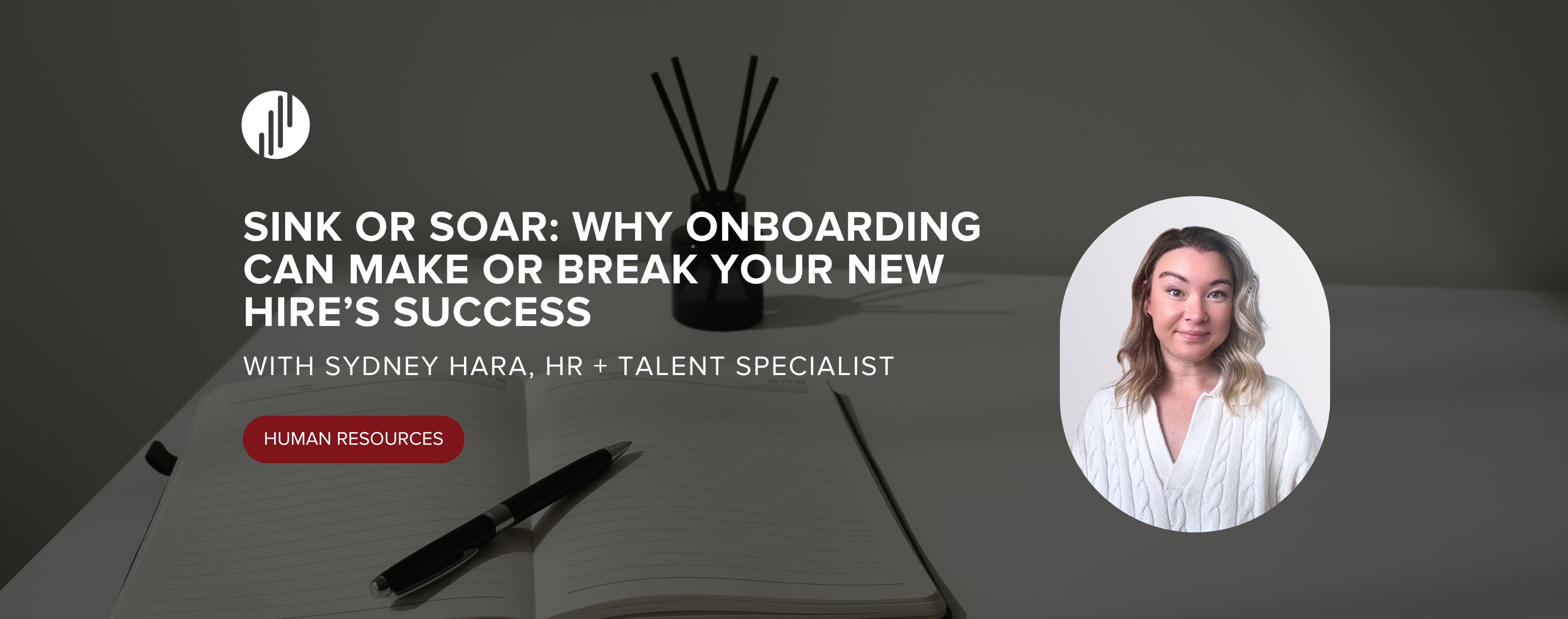
At Envol, we work with a lot of teams who are great at hiring — they know how to find the right person for the job. But even the strongest recruitment efforts can fall flat without a clear plan for what comes next. Because finding the right fit is only half the battle. The real challenge? Making sure that once someone says yes, they feel supported, confident, and ready to thrive.
I’ve seen it happen more than once: the team celebrates filling a key role, but without a thoughtful onboarding plan, the new hire is left to sink or swim. When someone is thrown into the organization without context or connection, even the best hire can stumble — and it ends up costing more in the long run. But I’ve also seen the opposite. When onboarding is done right, new team members feel welcomed, empowered, and ready to contribute from day one. That energy creates momentum — and the impact lasts well beyond the first 90 days.
If you’ve ever found yourself scrambling the day before a new hire starts, you’re not alone. The good news? With intention and alignment, onboarding can shift from a formality to a strategic tool for engagement, retention, and long-term success. In this blog post, I’m breaking down the top reasons we encourage our clients to invest in onboarding — and how it lays the foundation for growth that sticks.
Keep reading for 3 key reasons why investing in your onboarding experience is essential to your organization's success.
1. The True Cost of Recruitment & Onboarding
Hiring isn’t cheap - it's a major investment. And the costs don’t end once the offer is signed. From sourcing to interviews to negotiations, recruiting takes time, money, and energy. But the real return on that investment starts after day one.
In fact, the real return on that investment begins with a strong onboarding experience. Gallup estimates the cost of replacing an employee to be 1.5 to 2.5 times their salary. That’s why onboarding is a business-critical step that protects your investment and sets the stage for long-term success.
By prioritizing a seamless transition from candidate to contributor, organizations can transform the hiring process into a true growth engine. Every dollar spent on recruiting should be matched by the care, clarity, and connection provided through onboarding. When done right, onboarding can be a catalyst for impact, engagement, and lasting performance.
2. Productivity & Lost Time: The Hidden Bill
Every day a new hire spends guessing instead of doing is time (and money) lost. A strong onboarding experience shortens that learning curve. It gets people what they need sooner, so they can start contributing faster and feel confident doing it.
In fact, companies with structured onboarding see productivity improve by over 70%, and retention by 82%. That’s not just a win for new hires, it’s a win for your whole team!
When onboarding is intentional, you’re not just protecting your recruiting investment. You’re also setting the tone for performance, alignment, and long-term success!
3. Risks of Poor Onboarding: Turnover & Engagement Issues
When a new hire leaves within their first six months, the cost to the organization extends far beyond just recruiting expenses; it also disrupts team dynamics, slows down projects, and puts added pressure on remaining staff to pick up the slack.
The ripple effects on employee engagement can be significant. When coworkers see new hires exiting early, it raises questions about leadership, company culture, and internal support systems. Existing employees may feel less confident in the company’s direction or less motivated to engage with new team members. This can erode morale, fuel burnout, and ultimately lead to further attrition, creating a costly cycle that’s difficult to break. Globally, Gallup estimates that not engaged or disengaged employees cost organizations $8.8 trillion in lost productivity.
Early turnover also damages employer branding. In today’s transparent job market, former employees often share their experiences on platforms like Glassdoor or LinkedIn. In today’s job market, 75% of candidates consider an employer’s brand before applying to a role. If a pattern emerges of people leaving quickly, it can deter top talent from applying and even cause customers or partners to question the stability of your organization.
On the flip side, retaining new hires through an engaging and well-structured onboarding experience reinforces a strong, people-first reputation – making your company more attractive to future candidates and more competitive in the market!
Designing a Seamless Learning Journey: Day 1 → Year 3
Not sure where to start? We’ve got you.
We created a free Onboarding Checklist to help you build a process that’s clear, consistent, and people-first to ensure your new hires feel supported from day one.
Whether you’re onboarding your first employee or refreshing your current approach, this checklist breaks down the key moments that matter most:
- Pre-boarding must-dos
- What to cover on Day 1 (and what to avoid)
- Key touch points across the first 90 days
- Long-term strategies to keep your people growing
Download your copy to start building a smoother, smarter onboarding experience today!
Does an Ongoing Strategy Really Matter?
Short answer: yes!
By mapping a learning journey from Day 1 through Year 3, you can:
- Ensure clarity and confidence from day one
- Monitor and close skill gaps before performance issues arise
- Build employee engagement and organizational commitment over time
- Reduce costly turnover – especially within key early periods (0–45 days, months 1–6, year 1)
- Maintain learning and growth pathways to retain top talent into Year 3 and beyond!
Ready to turn your onboarding into a competitive advantage?
A great hire is only as strong as the onboarding that follows. Ready to turn new hire momentum into long-term results? We’d love to help.